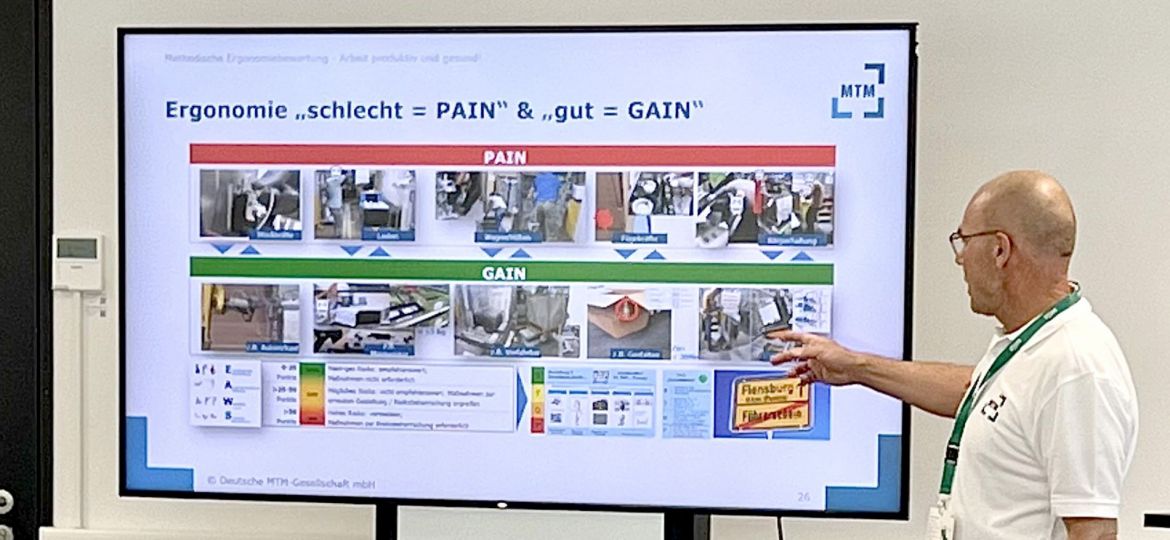Keeping employees healthy and on the job for the long term. Dr. Steffen Rast, head of the ergonomics department at Deutsche MTM-Gesellschaft mbH, addressed this requirement for today’s work planning in a keynote speech at the meeting of the “Time and Work Management” working group of AWF (Arbeitsgemeinschaft für Wirtschaftliche Fertigung). His conclusion: “The ergo traffic light must be set to green.”
EAWS® ASSESSES ERGONOMIC RISK
The MTM expert presented EAWS® (Ergonomic Assessment Worksheet), the internationally recognized tool for assessing ergonomic risks of a job, to the participants from different industries. EAWS® was developed to provide an overall risk assessment across all biomechanical risks an employee may be exposed to during their job. Furthermore, Rast mentionned the following characterics for EAWS: energy-saving posture, user-friendly tool, changing loads and gentle joint position.
In order to be able to evaluate the individual ergonomic load of an employee, points are assigned for various types of load on the entire body and the hand-arm system and aggregated in the so-called EAWS sheet. This data is then evaluated according to a traffic light scheme (green = low risk, yellow = possible risk and red = high risk). Appropriate measures (e.g. according to the STOP principle) are derived from this.
THE STOP PRINCIPLE FOR THE DESIGN OF WORK SYSTEMS
Regarding the STOP principle, Rast explained that a hierarchy of measures must always be considered when selecting protective measures. The goal of substitution (STOP), he said, is to replace lengthy or laborious processes with a new procedure, e.g., bolting with clinching, thus bringing about a change in the previous work method. If the substitution or change in the process cannot be carried out, the next measures to be considered should be technical measures (STOP), e.g. the use of a balancer, and then organizational measures (STOP), e.g. job rotation. If these measures are not sufficient to significantly reduce the hazard, personal measures (STOP), e.g., the use of an exoskeleton, should be taken.
The MTM expert illustrated this STOP principle with practical examples from the white goods industry.
DIGITAL SOLUTIONS FOR ERGONOMIC RISK ASSESSMENT
Digital solutions such as TiCon, EAWS® and Motion Capture now play a major role in the ergonomic design of work processes. TiCon is the standard software for industrial engineering and is available for the Windows, SAP and Teamcenter platforms as well as a SaaS solution. Motion Capture technology is a tracking method for capturing and recording movements. Via motion sensors, ACTUAL data is recorded using a human model via a MoCap suit and then evaluated using a 3D program. The digital movement data serve as the basis for integrative planning and design of human work.
The head of the ergonomics department mentioned job rotation as a possible measure for reducing ergonomic risk. This involves employees changing their workplace at predefined intervals. In an ergonomic sense, this leads to a change in stress, Rast noted. The EAWS® ergonomics assessment standard is currently being further developed. EAWS® 2.0, for example, also focuses on clinical pictures such as musculoskeletal disorders and RSI syndromes.
The latest information on EAWS® will be available at the EAWS International Symposium (EIS) as part of this year’s MTM SUMMIT – program and registration at summit.mtm.org.
